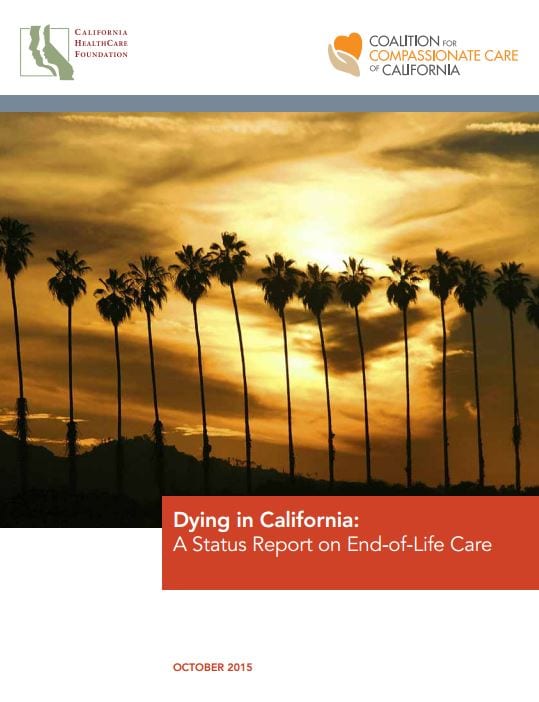Indicator: Terminal hospital stays that include intensive care unit (ICU) days
Description: A large majority of Californians say they would prefer a natural death if they became severely ill, rather than receiving artificial life-prolonging treatments. Though most individuals state that they would prefer to die at home, many die in hospitals where they often receive highly invasive, aggressive care. Use of an ICU within a hospital stay that ends in death is one indicator of a potential mismatch between patient preferences and care delivered. Tracking the number of hospitalizations that end in death that included an ICU stay is one way of assessing our ability to tailor care to patient preferences. A rate that shows variation across regions of the State, or that is significantly higher than what is seen in other parts of the country, may indicate opportunities to improve processes for eliciting patient preferences and implementing mechanisms that better assure that care is aligned with those preferences.
Data Limitations: Outcomes are derived from Medicare Fee-for-service (FFS) claims data. Use patterns in this population may differ from those seen in groups with other types of insurance coverage, such as Medicare Advantage (HMO) or Medi-Cal.
Indicator Source: Dartmouth Atlas of Healthcare analysis of Medicare fee-for-service claims data
Indicator Calculation Methodology: Denominator definition: 100% of Medicare enrollees age 65-99 who died during the measurement year with full Part A entitlement and no HMO enrollment during the measurement period. Age, gender, race, and eligibility are determined using the Denominator file.
Numerator definition: Number of patients admitted to ICU or CCU during terminal hospitalization (discharge status=’B’ in MedPAR file). ICU admission is determined by the presence of an ICU day indicator in the MedPAR claim: ICARECNT (intensive care day count), CRNRYDAY (coronary care day count). Adjustments: Rates are adjusted for age, sex, and race using the indirect method, using the US Medicare decedent population as the standard. Gender-specific rates are age and race adjusted; race-specific rates are age and sex adjusted. Research Methods description available at: https://www.dartmouthatlas.org/downloads/methods/research_methods.pdf
Data Collection Methodology: https://www.dartmouthatlas.org/downloads/methods/research_methods.pdf
Program URL Link: https://www.dartmouthatlas.org/
Geographic Granularity: State
Data are also available by Hospital Referral Regions (HRR) and Hospital Service Areas (HSA )
Hospital referral regions. HRRs represent regional health care markets for tertiary medical care that generally requires the services of a major referral center. The regions were defined by determining where patients were referred for major cardiovascular surgical procedures and for neurosurgery. Each HSA was examined to determine where most of its residents went for these services. The result was the aggregation of the 3,436 HSAs into 306 HRRs. Each HRR has at least one city where both major cardiovascular surgical procedures and neurosurgery are performed.
HSAs are local health care markets for hospital care. An HSA is a collection of ZIP codes whose residents receive most of their hospitalizations from the hospitals in that area. HSAs were defined by assigning ZIP codes to the hospital area where the greatest proportion of their Medicare residents were hospitalized. Minor adjustments were made to ensure geographic contiguity. This process resulted in 3,436 HSAs. When these regions were created in the early 1990s, most HSAs contained only one hospital. In the intervening years, hospital closures have left some HSAs with no hospital; these HSAs have been maintained as distinct areas in order to preserve the continuity of the database.
Data categorized by:
Health payer: Outcomes only reported for individuals with Medicare FFS coverage
Reporting Cycle: Annually
Reporting Lag: 3 Years
Tags (Keywords): Palliative care, end of life care, hospitalization, intensive care, end of life
National Benchmark Indicator: Terminal hospital stays that include intensive care unit days (National rate), same as above
National Data Limitations: California is a populous and diverse state: the health care system and payer mix are different from what exists in many other states.






